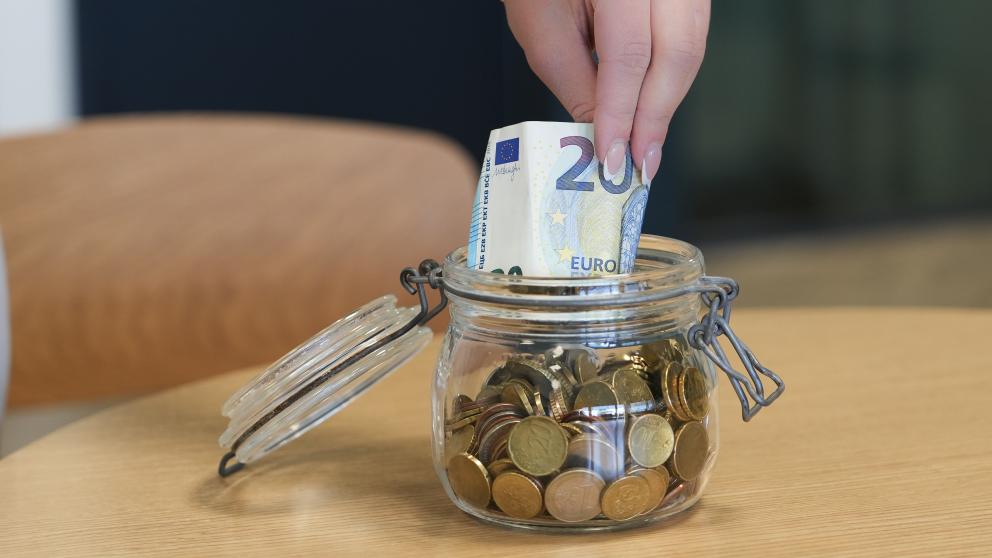
Unexpected expenses hurt your wallet – this is how big your rainy-day fund should be
Household appliances do not break down frequently, as often claimed in examples on savings. But it is good to be prepared for unexpected expenses. In unforeseen situations that occur without warning, you need money that is within reach and easily accessible without a visit to the bank.
Although we talk about a rainy-day fund, it is not actually a separate fund this time. We are talking about money that rests in an ordinary bank account, ready to be of help in times of trouble.
According to Panu Kalmi, a professor of economics at the University of Vaasa, you should have a rainy-day fund worth the salary of a couple of months. So, we are talking about several thousand euros. The amount may sound quite large and perhaps a bit elitist. How on earth can one save and maintain such a sum?
– Saving is largely a matter of habit, says Kalmi and encourages that a rainy-day fund of several thousand euros does not have to be built from scratch.
– To build up the rainy-day fund, you should set aside a certain amount from each salary. You can also make it easier for yourself by automating payments. For example, you can set up a recurring transfer for a certain portion of your salary to go directly to funds or a rainy-day account.
Cutting your spending
When living costs skyrocketed, a heated debate began about who suffers the most. Does the middle class or the poor take the biggest hit? Regardless of who is considered to suffer the most, the tight economic situations of recent years have affected the wallets of many.
The experience itself has not been all bad – everyone has gained motivation to update their financial knowledge and think about where they want to spend their money.
– Now, people are trying to save on goods that are not necessities, such as trips and hobbies, says Kalmi.
Therefore, to set aside a part of your salary for savings, likely requires giving up something or at least critically examining the cash flow of your household.
Giving up one's habits and routines is always difficult, but there are many ways to save. While one person prefers to heat their home with firewood rather than electricity, another chooses to work remotely to save on fuel costs, and a third brings their own lunch to work instead of eating at a restaurant.
Basic necessities are not to be saved on
– Living with scarcity is not a new thing, says Henna Syrjälä, adjunct professor of marketing from the University of Vaasa.
When it comes to so-called "necessary consumption," it is, according to Syrjälä, largely dependent on time, place, and culture.
Syrjälä and her colleagues have studied the attitudes that university students, downshifters, and the less affluent have towards the consumption of necessities in their project on consumers and responsibility as innovators of business.
– The experience that students have of consuming essential items differs greatly from that of the less affluent. However, for all kinds of consumers, consumption is strongly linked to the social aspect. By doing certain things or dressing in a certain way, one can demonstrate belonging to a certain group.
While one might initially think of food, housing costs, or perhaps a car as necessities, students perceived them differently.
For students, a mobile phone, a gym membership, or an expensive dress for a specific event were necessities that they did not want to save on.
– A gym membership gives access not only to a certain gym group but also to the so-called “self-care group”.
Stay calm
In the face of expensive purchases, Kalmi advises staying calm if possible. If your refrigerator breaks down at a critical moment, you cannot take your time but should head to the store immediately. Even in such cases, it is comforting to know that the amount of a household appliance has already been saved in advance.
If you want to take a trip on your vacation, Kalmi encourages saving the necessary amount in advance.
– As a rule of thumb, saving in advance is always better than buying on credit. However, you can still make purchases on credit as long as your consumption does not become reckless.
In addition to having money readily available in an ordinary bank account, Kalmi encourages making monthly investments in funds. Over time, they will grow with interest. Funds and stocks are part of long-term savings.
– Money that has been invested in funds for years has generated additional money, but converting funds into cash also has its own tax consequences. That is also why it is good to keep a rainy-day fund easily accessible in an ordinary bank account.

